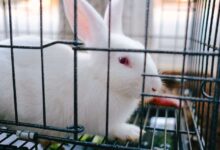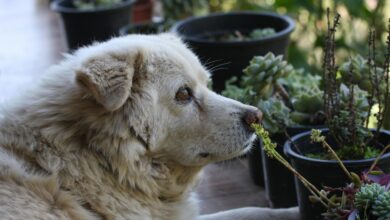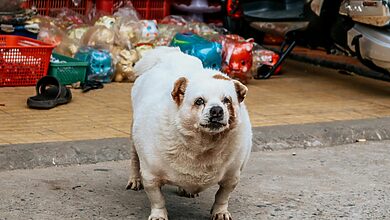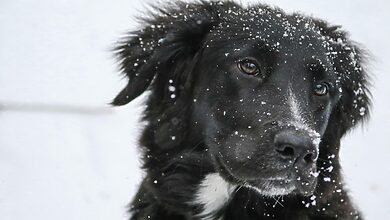Dog ACL Injury and Weight: 15 Powerful Tips to Keep Your Pup Safe
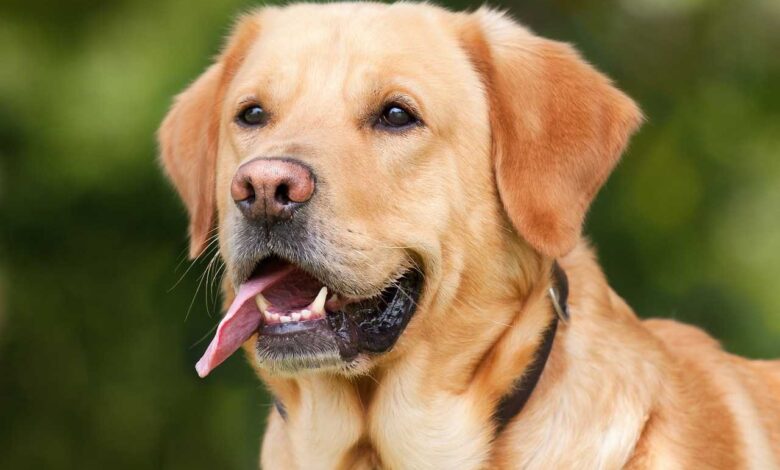
Dog ACL injuries are a common concern among pet owners, especially those with overweight dogs. The anterior cruciate ligament (ACL) is crucial for a dog’s knee stability, and an injury can lead to significant pain and mobility issues. This comprehensive guide explores the intricate relationship between dog ACL injury and weight, providing insights into prevention, management, and recovery. By understanding the risk factors and implementing effective weight management strategies, you can enhance your dog’s quality of life and prevent future injuries.
Our canine companions bring so much joy to our lives, but seeing them struggle can be heartbreaking. One common injury affecting active dogs is a torn ACL, also known as the Cranial Cruciate Ligament. This ligament provides stability to the knee joint, and a tear can cause significant pain and difficulty walking. While ACL injuries can happen to any dog, there’s a crucial factor that can significantly impact the risk and recovery process: weight.
In this guide, we’ll delve into the connection between dog weight and ACL injuries. We’ll explore how excess weight puts extra strain on the joints, increasing the risk of tears. But fear not, pet parents! We’ll also share valuable information on preventing ACL injuries through weight management and explore tips for supporting your dog’s recovery after surgery if needed.
Whether you’re looking to keep your furry friend healthy and active or navigating the road to recovery after an ACL injury, this guide is here to empower you with knowledge. So, grab a comfy spot on the couch with your pup by your side, and let’s dive in!
Understanding Dog ACL Injuries with 15 Tips

What is an ACL Injury?
An ACL injury in dogs refers to a tear or rupture of the anterior cruciate ligament, a key stabilizing ligament in the knee joint. This injury can be partial or complete and is often seen in active dogs, particularly those involved in high-impact activities. However, overweight dogs are at a higher risk due to the additional stress on their joints.
Dog ACL Injury Risk Factors
Several factors contribute to the risk of ACL injuries in dogs:
- Weight: Overweight and obese dogs are more susceptible due to the increased pressure on their joints.
- Breed: Certain breeds, such as Labrador Retrievers, Rottweilers, and Golden Retrievers, are genetically predisposed to ACL injuries.
- Age: Older dogs have a higher risk due to the wear and tear of ligaments over time.
- Activity Level: Highly active dogs, especially those engaged in activities requiring sudden turns and jumps, are at greater risk.
The Link Between Dog Weight and ACL Injury
Dog ACL Injury and Weight Gain
Excess weight significantly contributes to the likelihood of an ACL injury. The additional weight strains the ligaments, making them more prone to tearing. Moreover, overweight dogs often lead a more sedentary lifestyle, weakening their muscles and ligaments, further increasing the risk.
Overweight Dog ACL Tear
Overweight dogs are more prone to ACL tears because their joints bear extra weight, causing wear and tear. Even minor activities can lead to injuries in overweight dogs, making weight management a crucial aspect of prevention.
Dog Weight and ACL Injury Risk
Maintaining an ideal weight is essential for reducing the risk of ACL injuries. A balanced diet and regular exercise can help keep your dog in shape, reducing the strain on their joints and ligaments.
Preventing Dog ACL Injury with Weight Loss
Importance of Weight Management
Weight management plays a vital role in preventing ACL injuries. A well-maintained weight reduces the pressure on your dog’s joints, lowering the risk of injuries. Implementing a balanced diet and regular exercise routine is key to achieving and maintaining a healthy weight.
Best Practices for Weight Loss
- Balanced Diet: Opt for a high-quality, balanced diet that meets your dog’s nutritional needs without excess calories.
- Regular Exercise: Engage your dog in regular, low-impact exercises such as walking and swimming to promote weight loss without straining their joints.
- Portion Control: Monitor portion sizes to avoid overfeeding. Using a measuring cup can help ensure consistent portions.
- Healthy Treats: Replace high-calorie treats with healthier options such as carrot sticks or apple slices.
Managing Dog Weight After ACL Surgery
Post-Surgery Weight Management
Managing your dog’s weight after ACL surgery is crucial for a successful recovery. Excess weight can hinder the healing process and increase the risk of re-injury. Implementing a post-surgery weight management plan can help your dog recover effectively.
Best Diet for Dog After ACL Surgery
A balanced, nutrient-rich diet is essential for recovery. Consider the following dietary tips:
- High-Protein Diet: Protein aids in muscle repair and recovery.
- Low-Fat Options: Choose low-fat food options to prevent weight gain.
- Joint Supplements: Incorporate joint supplements such as glucosamine and chondroitin to support joint health.
Dog ACL Recovery and Weight Control
Importance of Weight Control During Recovery
Weight control during recovery is vital to prevent additional strain on the healing ligament. Keeping your dog’s weight in check can facilitate a smoother recovery and reduce the risk of complications.
Strategies for Effective Weight Control
- Controlled Exercise: Follow your vet’s guidelines for controlled exercise to prevent re-injury while promoting weight loss.
- Dietary Adjustments: Adjust your dog’s diet to ensure they receive adequate nutrients without excess calories.
- Monitoring Progress: Regularly monitor your dog’s weight and adjust their diet and exercise routine as needed.
Canine Obesity and Cruciate Ligament Injuries
The Impact of Obesity on Joint Health
Obesity negatively impacts joint health, leading to various issues, including ACL injuries. The excess weight causes additional wear and tear on the ligaments, making them more susceptible to injuries.
Preventing ACL Injuries Through Weight Management
Preventing ACL injuries involves maintaining a healthy weight through a balanced diet and regular exercise. Weight management not only reduces the risk of ACL injuries but also promotes overall joint health.
Dog ACL Injury Symptoms

Recognizing the Signs
Recognizing the symptoms of an ACL injury can help you seek prompt veterinary care. Common signs include:
- Limping: Favoring one leg over the other.
- Swelling: Swelling around the knee joint.
- Pain: Signs of pain when the affected leg is touched or moved.
- Decreased Activity: Reluctance to engage in physical activities.
Early Detection and Treatment
Early detection and treatment are crucial for a better prognosis. If you notice any signs of an ACL injury, consult your veterinarian immediately for a thorough examination and appropriate treatment plan.
Dog ACL Surgery Recovery Time
Typical Recovery Timeline
The recovery time for ACL surgery varies depending on the severity of the injury and the type of surgery performed. Generally, it takes about 8-12 weeks for initial recovery, with full recovery potentially taking up to six months.
Post-Surgery Care
Post-surgery care is essential for a successful recovery. Follow your vet’s instructions for wound care, medication, and controlled exercise to ensure your dog heals properly.
Weight Management for Dogs
Importance of Maintaining a Healthy Weight
Maintaining a healthy weight is crucial for your dog’s overall well-being. It reduces the risk of various health issues, including ACL injuries, and promotes a longer, healthier life.
Tips for Effective Weight Management
- Regular Exercise: Engage your dog in regular physical activities suited to their age and breed.
- Balanced Diet: Provide a balanced diet that meets their nutritional needs without excess calories.
- Portion Control: Monitor portion sizes to prevent overfeeding.
- Healthy Treats: Opt for low-calorie, nutritious treats.
Healthy Weight for Dog Breeds
Understanding Breed-Specific Weight Ranges
Different dog breeds have specific weight ranges that are considered healthy. Understanding these ranges can help you maintain your dog’s weight within the ideal limits.
Monitoring Your Dog’s Weight
Regularly monitoring your dog’s weight and body condition score can help you ensure they remain within the healthy weight range for their breed. Consult your veterinarian for guidance on the ideal weight for your dog.
Dog Joint Supplements for Weight Loss
Benefits of Joint Supplements
Joint supplements can support your dog’s joint health and aid in weight loss. Common supplements include glucosamine, chondroitin, and omega-3 fatty acids.
Choosing the Right Supplements
Consult your veterinarian to choose the right supplements for your dog’s specific needs. They can recommend the appropriate dosage and type of supplement based on your dog’s health condition.
Exercise for Overweight Dogs After Surgery
Low-Impact Exercises
Engaging your overweight dog in low-impact exercises after surgery can promote weight loss and aid in recovery. Suitable exercises include:
- Walking: Short, controlled walks to avoid overexertion.
- Swimming: A low-impact activity that promotes muscle strengthening and weight loss.
Monitoring Exercise Routine
Monitor your dog’s exercise routine and adjust it based on their recovery progress. Avoid high-impact activities that could strain the healing ligament.
Preventing Future Dog ACL Injuries
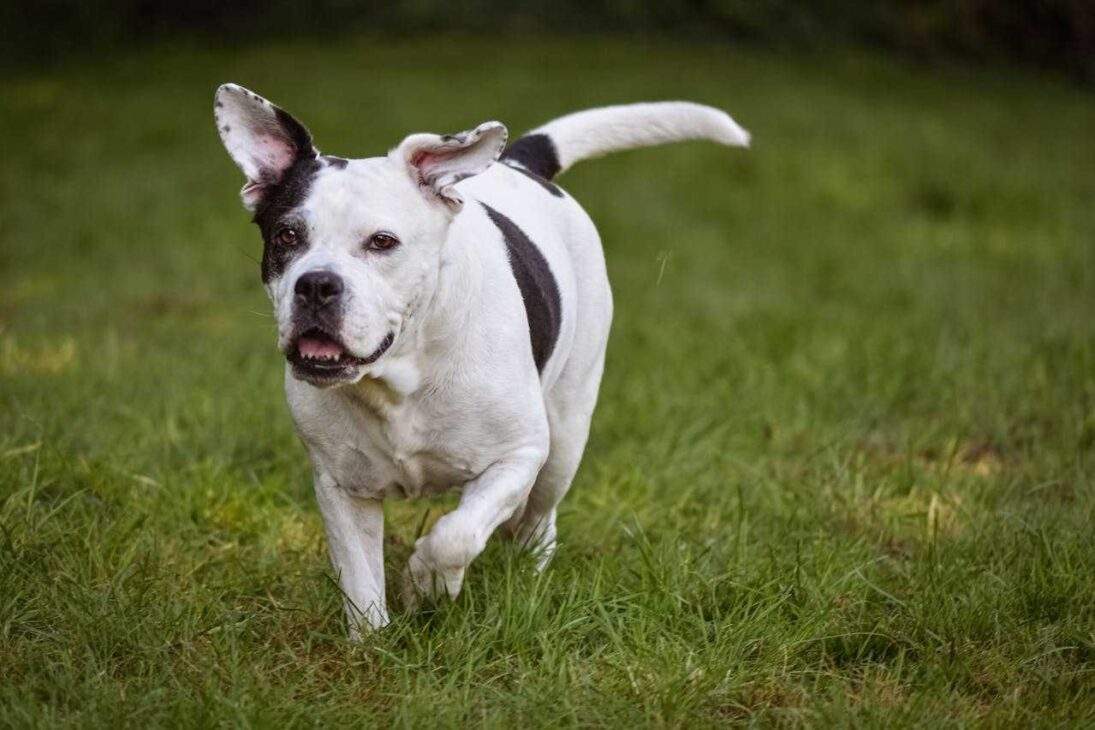
Strategies for Prevention
Preventing future ACL injuries involves maintaining a healthy weight, providing regular exercise, and ensuring proper joint care. Implementing these strategies can reduce the risk of re-injury.
Regular Veterinary Check-Ups
Regular veterinary check-ups are essential for monitoring your dog’s joint health and overall well-being. Your vet can provide guidance on preventive measures and early detection of potential issues.
Dog Physical Therapy After ACL Surgery
Benefits of Physical Therapy
Physical therapy can significantly aid in your dog’s recovery after ACL surgery. It helps improve mobility, strengthen muscles, and reduce pain.
Common Physical Therapy Techniques
- Hydrotherapy: Using water to support weight and reduce strain on joints.
- Massage Therapy: Enhancing blood circulation and reducing muscle tension.
- Controlled Exercises: Specific exercises designed to improve strength and flexibility.
Best Dog Food for Joint Health
Nutrient-Rich Diet
Providing a nutrient-rich diet can support your dog’s joint health. Look for dog food that includes:
- High-Quality Protein: Supports muscle repair and maintenance.
- Omega-3 Fatty Acids: Reduces inflammation and promotes joint health.
- Antioxidants: Supports overall health and reduces oxidative stress.
Consulting Your Veterinarian
Consult your veterinarian to choose the best dog food for your dog’s joint health. They can recommend specific brands and formulations based on your dog’s needs.
Dog Joint Pain Relief for Overweight Dogs
Managing Joint Pain
Managing joint pain in overweight dogs involves weight management, medication, and supplements. Consult your veterinarian for appropriate pain management strategies.
Pain Relief Options
- Medications: Anti-inflammatory medications prescribed by your vet.
- Supplements: Joint supplements to support joint health.
- Physical Therapy: Techniques to reduce
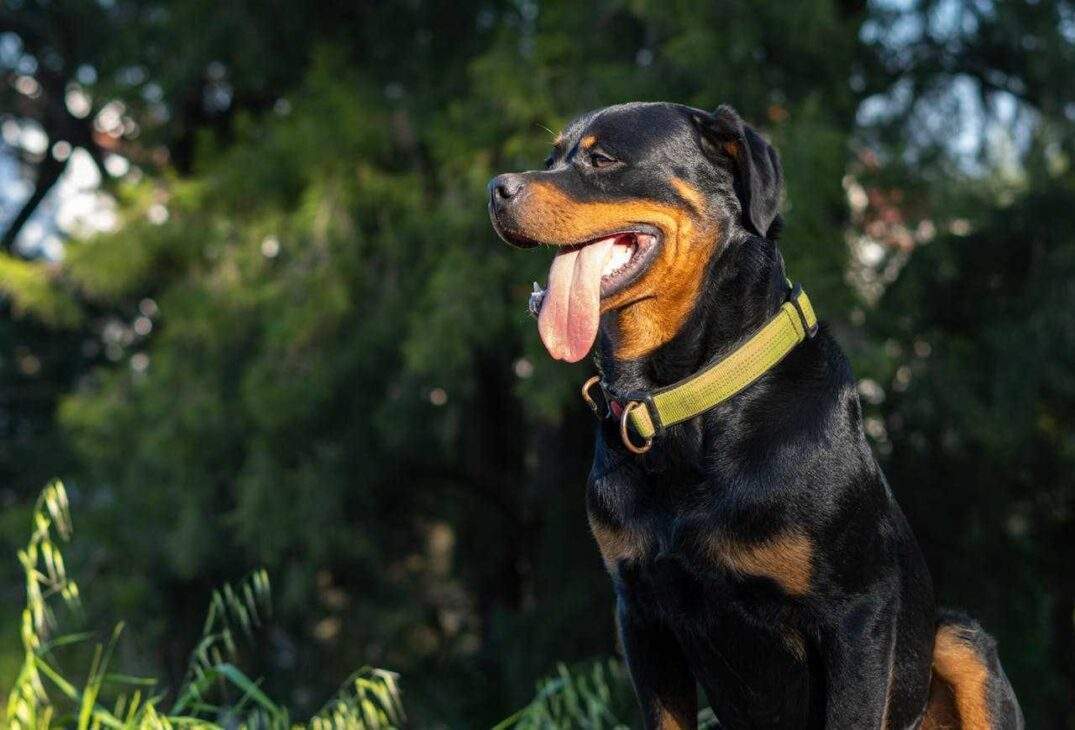
Dog ACL Injury and Weight
Phew! We’ve covered a lot of ground, but remember, keeping your dog at a healthy weight is one of the most effective ways to prevent ACL injuries and ensure a smooth recovery if one occurs. By incorporating a healthy diet, regular exercise, and regular weight checks, you can significantly reduce the risk and help your furry friend live a long, active, and pain-free life.
Of course, every dog is an individual, and if you have any concerns about your dog’s weight or suspect an ACL injury, always consult your veterinarian. They can create a personalized plan for your precious pup, whether it’s weight management strategies or recommending the best course of action for recovery.
So, go forth, armed with this knowledge, and shower your dog with love, healthy meals, and fun exercise! Together, you can create a happy and healthy life for your furry best friend.
FAQ
1. What is an ACL injury in dogs?
An ACL injury in dogs refers to a tear or rupture of the anterior cruciate ligament, a crucial stabilizing ligament in the knee joint. This injury often causes pain, limping, and decreased activity. It can occur due to sudden twists, turns, or overexertion, especially in overweight or highly active dogs.
2. How does a dog’s weight impact the risk of an ACL injury?
A dog’s weight significantly impacts the risk of an ACL injury. Excess weight puts additional stress on the ligaments, increasing the likelihood of a tear or rupture. Overweight dogs often have weaker muscles and ligaments, making them more prone to injuries during physical activities.
3. What are the symptoms of a torn ACL in dogs?
Common symptoms of a torn ACL in dogs include limping, swelling around the knee joint, pain when the affected leg is touched or moved, and a reluctance to engage in physical activities. Early detection of these symptoms is crucial for prompt veterinary care and treatment.
4. How can I prevent ACL injuries in my dog?
Preventing ACL injuries involves maintaining a healthy weight through a balanced diet and regular exercise. Low-impact exercises, such as walking and swimming, are beneficial. Regular veterinary check-ups and monitoring your dog’s activity levels can also help in early detection and prevention of injuries.
5. What should I feed my dog after ACL surgery?
After ACL surgery, a high-protein, low-fat diet is recommended to aid in muscle repair and prevent weight gain. Including joint supplements like glucosamine and chondroitin can support joint health. Consult your veterinarian for a tailored diet plan suited to your dog’s recovery needs.
6. How long does it take for a dog to recover from ACL surgery?
The recovery time for ACL surgery typically ranges from 8-12 weeks for initial healing, with full recovery potentially taking up to six months. Recovery involves controlled exercise, proper diet, and adherence to veterinary advice to ensure successful healing and prevent re-injury.
7. What are the best exercises for an overweight dog after ACL surgery?
Low-impact exercises such as short, controlled walks and swimming are ideal for overweight dogs after ACL surgery. These activities promote weight loss and muscle strengthening without putting excessive strain on the healing ligament. Always follow your vet’s guidelines for post-surgery exercise.
8. Can joint supplements help in weight loss for dogs?
Joint supplements can support weight loss indirectly by improving joint health and mobility, allowing dogs to engage more comfortably in physical activities. Supplements like glucosamine and omega-3 fatty acids reduce inflammation and support overall joint health, contributing to a more active lifestyle.
9. What are the risk factors for ACL injuries in dogs?
Risk factors for ACL injuries in dogs include being overweight, certain breeds (such as Labrador Retrievers and Rottweilers), older age, and high activity levels involving sudden turns and jumps. Genetic predisposition and existing joint conditions also increase the risk.
10. How can I manage my dog’s weight to prevent future ACL injuries?
To manage your dog’s weight and prevent future ACL injuries, provide a balanced diet, monitor portion sizes, and engage in regular, low-impact exercise. Regular veterinary check-ups can help track your dog’s weight and overall health, ensuring timely adjustments to their diet and exercise routine.
11. What is the role of physical therapy in a dog’s recovery from ACL surgery?
Physical therapy plays a crucial role in a dog’s recovery from ACL surgery. Techniques such as hydrotherapy, massage therapy, and controlled exercises help improve mobility, strengthen muscles, reduce pain, and promote overall joint health. These therapies, tailored to the dog’s specific needs, aid in a faster and more effective recovery.
12. How can I recognize if my dog is overweight and at risk for an ACL injury?
To determine if your dog is overweight, you can perform a simple body condition assessment. You should be able to feel your dog’s ribs without pressing hard, see a noticeable waist when viewed from above, and observe a tucked-up abdomen from the side. If your dog lacks these features or shows signs of lethargy, difficulty moving, or rapid weight gain, they may be overweight and at a higher risk for ACL injuries. Regular veterinary visits can provide a more accurate assessment and guidance on maintaining a healthy weight.


